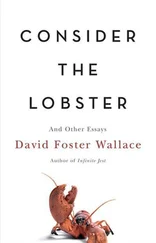Q.
‘At root, according to the policy paper, the gap was a matter of compliance. Type of thing. Obviously — since the gap represented a given percentage of noncompliance. But the subsection of the memo of interest concerned the parts of the tax gap that could be profitably addressed by the Service. Reduced, ameliorated. Type of thing. Meaning heightened revenue. A certain portion of the annual tax gap was due to an underground cash economy, barter mechanisms and in-kind exchanges, illicit income, and certain very sophisticated tax-avoidance mechanisms for the wealthy that could not be addressed in the short term. But Spackman’s paper’s analysis argued that a significant portion of the gap was the result of remediable misreporting, including Individual Forms 1040, which he argued could be addressed and ameliorated in the short term. The short term, for understandable reasons, the current administration was particularly keen on. Hence the intersection of technical policy and politics, which is how change occurs at the national level, then trickles down to us in the trenches, type of thing, through reorganizations and changes in Performance Review criteria, since 1040s are the purview of Rote Exams. Should I explain the different areas and types of examinations done here?’
Q.
‘Not at all. On a root level, Spackman’s memo broke the remediable, 1040-related portions of the tax gap down into three broad areas, categories, type of thing — nonfiling, underreporting, and underpayment. Nonfiling, in most cases, is the purview of CID. Criminal Investigations. Underpayment is handled through the Collections Division, a very different outfit, both philosophically and operationally, from what we do here in Exams, type of thing, although our two divisions, Exams and Collections, along, of course, with Audits, form the brunt of the Initiative. Which is also, organizationally, the Compliance Branch. At root, as examiners, we here deal with underreporting. Type of thing. Understated income, invalid deductions, overstated expenses, improperly claimed credits. Discrepancies, type—’
Q.
‘At the root level, the argument of the Spackman Initiative, as it’s come to be called here, both philosophically and organizationally, was that these three elements of the tax gap could be ameliorated by increasing the efficiency of the IRS respecting compliance. It’s not difficult to see why this notion caught the political administration’s eye as a potential third option, a way to help address the increasingly untenable revenue shortfall without raising rates or cutting outlays. Type of thing. Needless to say, this is all very simplified. I am attempting to explain the extraordinary developments that have taken place in the structure and operations of the Service as we here at the regional level experience it. It has been, to say the least, an unusually exciting year. And the root cause of the excitement, and also a certain amount of controversy, is the Spackman Initiative. This is what it came to be called. A sweeping, far-reaching reorientation in the Service’s institutional sense of itself and its role in policy. Type of thing. Listen — are you all right?’
Q. [Pause, interval of static.]
‘—of thing, which Triple-Six also found advantageous, argued that, under certain technical conditions, each dollar added to the Service’s annual budget could be made to yield over sixteen dollars in additional revenue to Treasury. A good deal of this argument’s body was devoted to considering the IRS’s peculiar status and function as a federal agency. A federal agency is, by definition, an institution. A bureaucracy. But the Service was also the only agency in the federal apparatus whose function was revenue. Income. Meaning whose mandate was to maximize the legal return on each dollar invested in its annual budget. Type of thing. More than any other, then, according to the resurrected Spackman, there was compelling reason to conceive, constitute, and operate the IRS as a business — a going, for-profit concern type of thing — rather than as an institutional bureaucracy. At root, the Spackman report was intensely anti-bureaucratic. Its model was more classically free-market. The attractiveness of this to the free-market conservatives of the current administration should be understandable. This, after all, is an era of business deregulation. How best, and how much, to in a sense deregulate the IRS — which, of course, as a federal agency, was set up and operates as a set of legal regulations and mechanisms for enforcement — this was a thorny and still-evolving type of question type of thing. Some saw Spackman as an ideologue. Not every proposal in the original paper was resurrected — not everything became part of the Initiative. But the time was right, politically speaking, type of thing, for at least the root essence of Spackman’s proposal. It would be difficult to overemphasize the consequences of this shift in philosophy and mandate for those of us on the ground of the effort. The Initiative. For example, an intensive new recruitment and hiring effort and an almost 20 percent increase in Service personnel, the first such increase since TRA ’78. I refer also to a massive and seemingly endless restructuring of the Service’s Compliance Branch, the most relevant [inaudible] of which to us here was the fact that the seven Regional Commissioners have assumed more autonomy and authority under the more de-decentralized operational philosophy of the Spackman Initiative.’
Q.
‘This is another complicated subject, one that involves an extensive knowledge of US tax law and the history of the Service as part of the executive branch and yet also overseen by Congress. A critical part of what’s now known as the Spackman Initiative involved finding an efficient middle way between two opposing tendencies that had hampered the Service’s operations for decades, one being the decentralization mandated by the 1952 King Commission in Congress, the other being the extreme bureaucratic and political centrism of the national administration at Triple-Six. One could say that the 1960s was an era, speaking within the institutional history of the Service, in which the District office predominated. The 1980s is shaping itself to be the era of the Region. Type of thing. As an organizational middle ground between the many Districts and unitary Triple-Six administration. Administrative, structural, logistical, and procedural decisions are now far more in the hands of the Regional Commissioner and his deputies, that, in turn, delegate responsibilities according to flexible but coherent operational guidelines, type of thing, which results in more root autonomy for the centers.’
Q.
‘Each Region including one Service Center and, with one current exception, one Examination Center. Shall I explain the exception?’
Q.
‘At root, under the Initiative, Regional Service and Examination Centers are allowed considerably more latitude in structure, personnel, systems, and operations protocols, resulting in increased authority and responsibility on the part of these facilities’ Directors. The guiding idea is to free these large central processing facilities from oppressive or hidebound regulations which impede effective action. Type of thing. At the same time, extreme pressure is applied with respect to one and only one primary, overarching goal: results. Increased revenue. Reduced noncompliance. Reduction of the gap. Not quite quotas, of course — never that, of course, for reasons involving fairness and public perception — but close. We’ve all watched the news, you and I, and yes, more aggressive auditing is part of the picture. Type of thing. But the shifts and emphases in the Audits Divisions are largely changes of degree, a quantitative type of thing — including the advent of automated letter audits, which again is outside our area of working knowledge here. For us, however, in Examinations, there has been a dramatic, qualitative shift in operational philosophy and protocols. It can be felt by the lowliest GS-9 at her keypunch console. If Audits are the Initiative’s weapon, type of thing, we in Exams are the telemetrists, tasked with determining where best to point that weapon. As deregulated, there is now only one overriding operational question: Which returns are most profitable to audit, and how are those returns most efficiently to be found?’
Читать дальше












